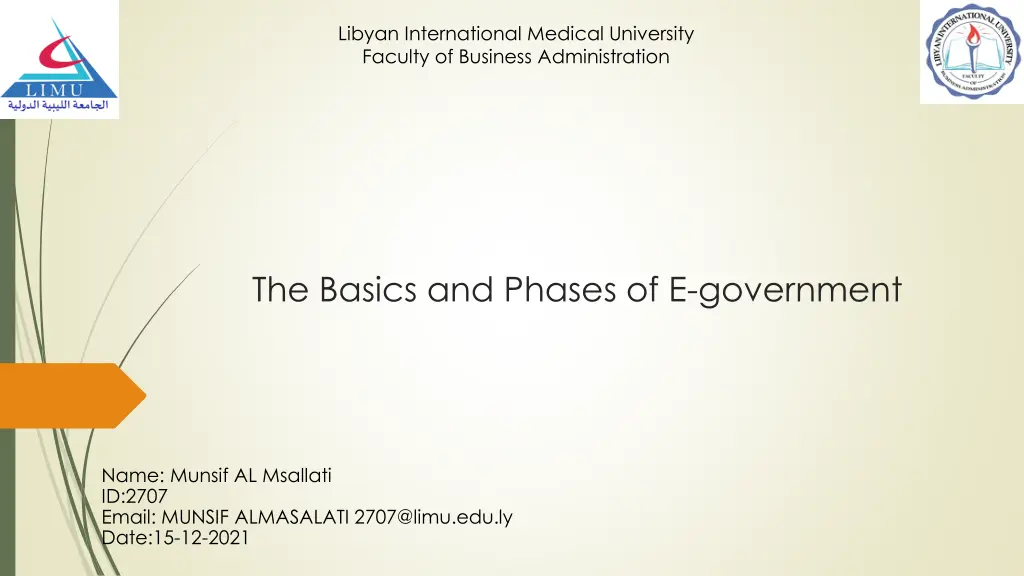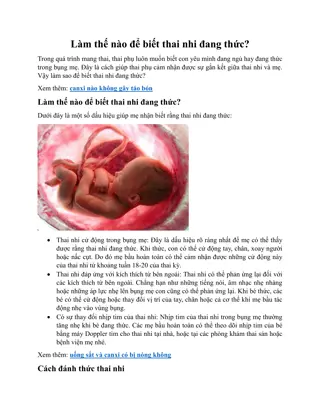
Understanding E-Government: Basics, Types, Phases, and Impacts
Explore the fundamentals of E-government including definitions, types, phases, and its transformative potential in improving government operations and customer service. Learn about the significant roles of ICT in shaping modern governance structures and processes.
Download Presentation

Please find below an Image/Link to download the presentation.
The content on the website is provided AS IS for your information and personal use only. It may not be sold, licensed, or shared on other websites without obtaining consent from the author. If you encounter any issues during the download, it is possible that the publisher has removed the file from their server.
You are allowed to download the files provided on this website for personal or commercial use, subject to the condition that they are used lawfully. All files are the property of their respective owners.
The content on the website is provided AS IS for your information and personal use only. It may not be sold, licensed, or shared on other websites without obtaining consent from the author.
E N D
Presentation Transcript
Libyan International Medical University Faculty of Business Administration The Basics and Phases of E-government Name: Munsif AL Msallati ID:2707 Email: MUNSIF ALMASALATI 2707@limu.edu.ly Date:15-12-2021
Table of contents: 1-Introduction. 2-E-government definition. 3-Types of e-government. 4-Phases of e-government. 5-Conclusion. 6-References. 01
INTRODUCTIO: Information and Communication Technology (ICT) is one of the most important characteristics of our age and every new development changes our lives to some extent. 02
E-GOVERNMENT DEFINITION: E-government is also known by different terms such as Electronic Government, Digital Government, Online Government, etc. In fact, there are many definitions for the term e-Government and differences reflect the priorities in the government strategies. 03
TYPES OF E-GOVERNMENT: 1-Government-to-citizen:The majority of government services come under this application, towards providing citizens and others with comprehensive electronic resources to respond to individuals routine concerns and government transactions. 2- Government-to-business: Government to business, is the second major type of e-government category. can bring significant efficiencies to both governments and businesses. 3-Government-to-government:This communications between government organizations, departments and agencies based on a super-government database. Moreover, it refers to the relationship between government and its employees as refers to the online outlined below. 04
Gartners Four phases of E-government model: 1 (Presence): Presence of simple information providing passive website indicating the same level information as information brochure. 2 (Interaction): The interaction stage offers simple interactions between G2C, G2B, and G2G. This include providing email contact , forms for taking in the questions and providing informational responses. 3 (Transaction): This stage involves ability to make financial transactions to avail government services 4 (Transformation): Transformation stage involves making use of available data and learnings from transactions to trasform governance and existing processes. 05
CONCLUSION: E-government has the potential to greatly improve how government operates internally and how it serves its customers. E-government is much more than a tool for improving cost-quality ratios in public services. 06
REFERENCES: Akbulut, A. (2003). An investigation of the factors that influence electronic information sharing between state and local agencies. Louisiana State University. Layton, T. (2007). Information Security: Design, Implementation, Measurement, and Compliance. Boca Raton, FL: Auerbach publications 4 Alorie Gilbert, President Bush Backs E-Government, Digital Signatures, InformationWeek, 6 April 2001, p. 24






















